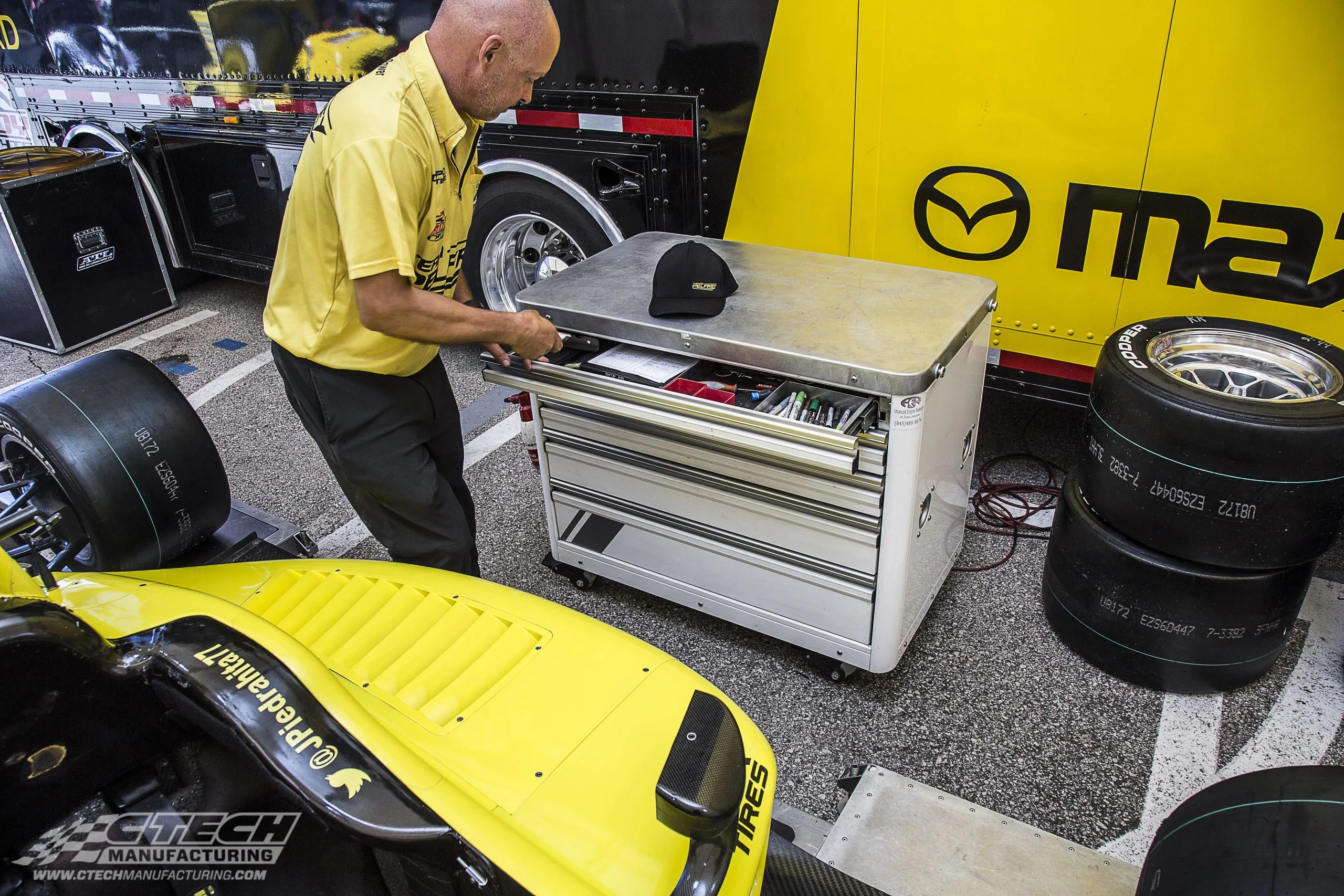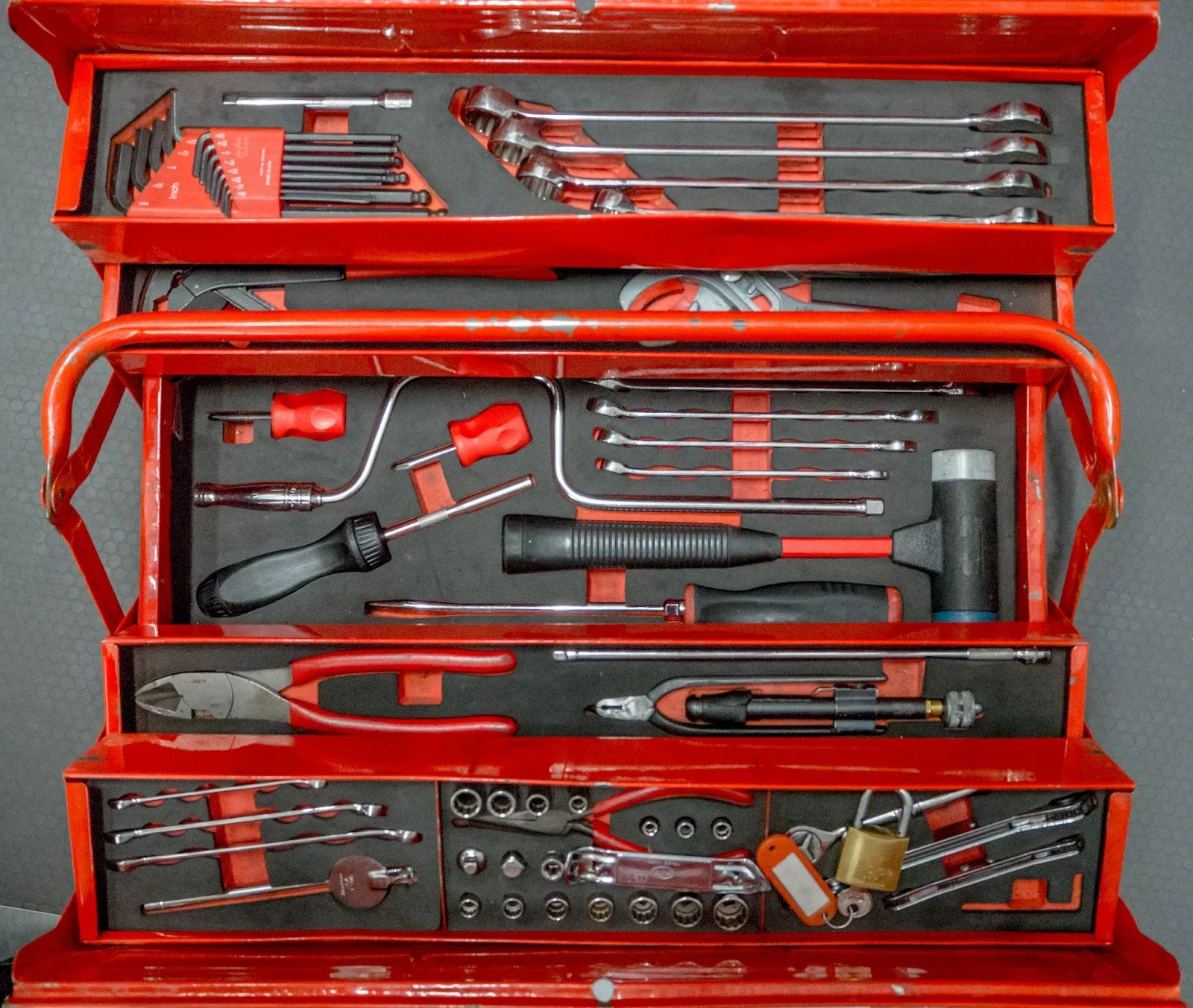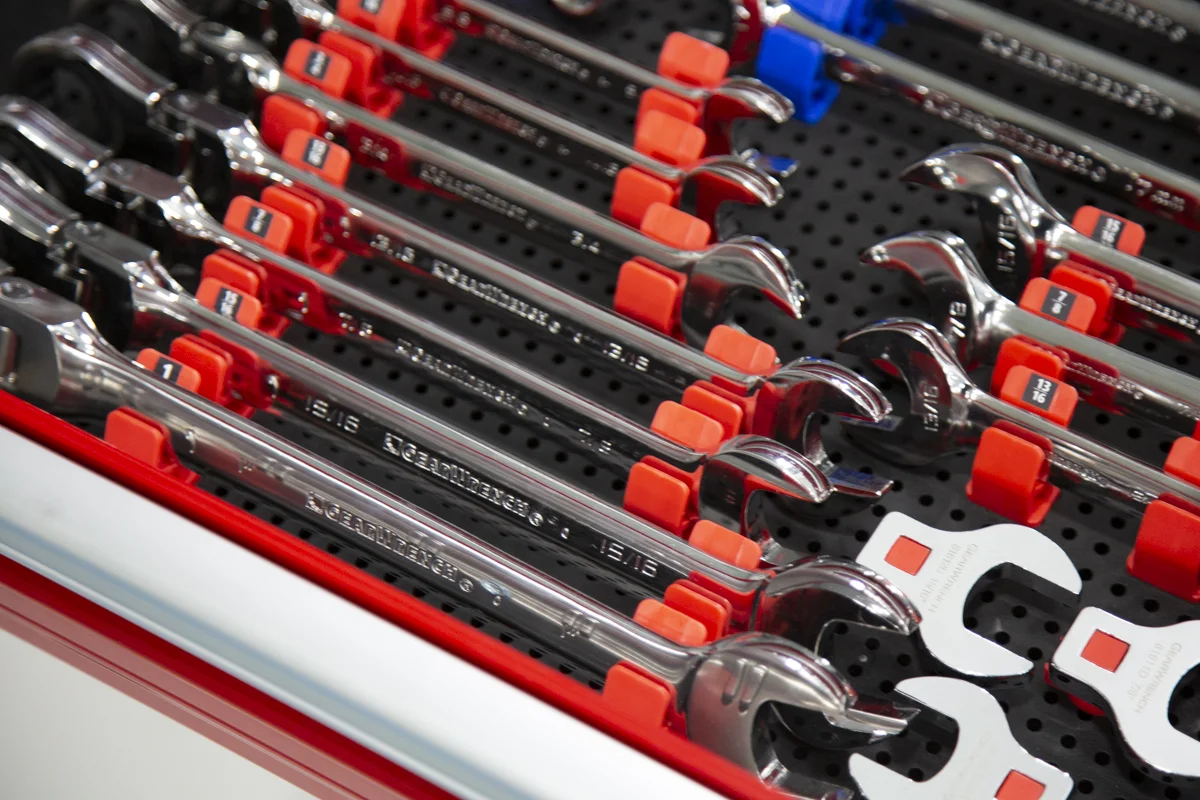Tool Storage Showdown: Evaluating Tool Cart Vs. Tool Box Features

Weston, WI – May 17, 2023: When it comes to organizing and storing your valuable tools, having the right tool storage solution is essential. Two popular options that mechanics, DIY enthusiasts, and professionals often consider are tool carts and tool boxes. Now, the terms “tool cart” and “tool box” are often used interchangeably, but for the purposes of this article, tool carts are the ones with wheels and a work surface, and tool boxes are the ones that don’t.
Each has its own set of features and benefits, making it important to understand their differences to make an informed decision. In this article, we will evaluate the key features of tool carts and tool boxes to help you determine which storage system suits your needs best.
Tool Cart Snapshot: Mobility and Convenience

Tool carts, which include the likes of rolling tool cabinets, service carts, or utility carts, are designed with mobility in mind. They typically feature multiple drawers and shelves, allowing you to organize your tools efficiently. One of the standout advantages of tool carts is their wheels (especially when they’re caster wheels), which enable easy maneuverability around the workspace. This feature is particularly beneficial in automotive or large workshop settings where tools need to be transported frequently.
Leading brands like CTech, Snap-On, and US General offer high-qualitytool carts with sturdy construction and durable materials like aluminum. They often come with drawer liners, providing extra protection for your tools and preventing them from sliding around.
Where tool carts really excel is in their capacity for tool organization. Tool carts typically have tool drawers, which can accommodate tool organization systems like Toolgrid. Toolgrid can help you wrangle all of your tools into an organized layout and also keep them secure whenever you move your cart. Screwdrivers, wrenches, and pliers all have holders that can be plugged in and arranged as desired in your tool drawers. If organization is important to you, this alone may be reason enough to opt for a rolling tool cart or tool chest.
Tool Box Snapshot: Versatility and Capacity

Tool boxes are popular among professionals and DIYers alike. They come in various sizes, from portable tool boxes to large tool boxes suitable for substantial tool collections. The large variety, often referred to as top chests or top boxes because they can be stacked on top of a tool cart, is designed to offer a higher storage capacity and are capable of accommodating larger tools or even power tools within them. The small portable, hand-held toolbox is designed to take your most-used tools with you around the house, shop, trailer, or in the vehicle.
Top brands such as Craftsman, DeWalt, and Stanley provide a wide range of tool box options to meet diverse needs. Many tool boxes feature pull-out trays and compartments, allowing for general organization and easy access to your hand tools.
Some tool boxes have a stackable design, so you can stack multiple, smaller toolboxes on top of one another. And sometimes, you can even roll them, but the movement of these is more like a suitcase than a cart. The most popular choice for this design is theMilwaukee Packout. The downfall to this kind of design is that to reach almost any tool, you’ll have to unstack the separate tool boxes, which takes up space and time.
Tool Cart vs. Tool Box: Making the Choice

Choosing between a tool cart and a tool box depends on your specific requirements and work environment. Let’s explore what the best choice may be for you, depending on what you plan on using your tool solution for.
- Workshops : Workshops often require quick access to tools and the flexibility to move them around. In this case, a tool cart is highly beneficial. Its casters enable effortless maneuverability, allowing you to bring your tools closer to the work area. The multiple drawers and compartments in tool carts facilitate efficient organization and ensure that the right tool is always within reach.
- Residential Garages : For home garages where space may be limited, a tool box can provide a compact yet efficient storage solution. It’s the perfect solution for when you need to quickly grab tools for a home improvement or repair project. If you have a large garage or pole shed, however, then a tool cart could come in handy when you need to work on projects around the garage or in different areas of your property.
- Trailers : Tool storage in trailers, such as those used for camping, construction, or mobile workshops, requires a solution that can withstand movement and vibrations. Tool carts with sturdy construction and secure locking mechanisms are not only ideal but necessary for this purpose. And not all brands are the same in this regard. Steel or low-budget carts are not designed for mobile use and often come apart after a short time. For this application, it’s best to invest in a brand that’s familiar and trusted in this arena, like CTech. CTech’s high-performance tool carts will ensure that your tools remain organized and protected during transportation and are readily accessible when needed for years.
- Professional Mechanics : Automotive or heavy duty mechanics are often working with a lot of tools away from their stationary workbench, which is why mechanic tool carts are so popular. It allows mechanics to bring their tools and a work surface with them wherever they need to go in their shop. However, if you have the means, a combo of tool storage solutions may be beneficial. A rolling tool cart can provide mobility and easy access to frequently used tools, while a larger tool box or tool chest can offer additional storage capacity for larger and less frequently used tools. This combination allows for efficient organization and maximizes workspace utilization.
- DIY Enthusiasts : DIYers who work on various projects around the house can benefit from both tool carts and tool boxes, but a toolbox is usually a wise first investment. A toolbox can provide a central location in a workshop. A portable toolbox is a great introductory solution to be able to transport tools, as they’re often a lower investment than a tool cart. If you’re an experienced enthusiast or in the motorsport arena, a tool cart provides the convenience of mobility, allowing you to move a much larger amount of tools from space to space as needed.
- Trade Shows : When it comes to trade shows or mobile demonstrations, tool boxes are a great choice. Their compact mobility allows for easy transportation of tools and equipment to different locations. However, if you have larger storage requirements and want a better visual presentation, then a cart is the way to go. Tool carts can roll right onto a trailer or the bed of a truck and roll right into the venue.
Features to Look For in a Tool Solution

Whether you decide to buy a toolbox or tool cart, there are important features to consider. By carefully evaluating these key features, you can make an informed decision when choosing a toolbox or tool cart that best suits your needs.
- Size and Storage Capacity : The first factor to consider is the size and storage capacity of the toolbox or tool cart. Assess your tool collection and estimate its growth over time. Ensure that the chosen toolbox or cart has enough space to accommodate your existing tools and potential future additions. Consider the dimensions, number of compartments, drawers, and shelves offered to ensure a suitable storage solution for your needs.
- Durability and Construction : Durability is crucial when selecting a toolbox or tool cart, as it needs to withstand the rigors of daily use and transportation. Look for high-quality construction materials that offer excellent strength and longevity. Metals are preferable over plastic for their durability, but aluminum, in particular, is the best metal for tool storage. It’s heavy-duty but much lighter weight than stainless steel and the like. This is crucial for something you’ll be frequently pushing or carrying. Other important factors to consider here are reinforced corners, efficient handles, and secure latching mechanisms are also desirable features that enhance the overall durability and security of your tools.
- Mobility and Portability : Consider the mobility and portability of the toolbox or tool cart, especially if you frequently work in different locations or need to transport your tools on job sites. Look for features like sturdy wheels, preferably casters with swivel and locking capabilities, or even dedicated push/pull/tow chassis like those of CTech’s Mini and Worktop Carts, which allow for smooth movement and secure placement. Additionally, ergonomic handles and lightweight designs can make it easier to maneuver the toolbox or cart.
- Organization and Accessibility : Efficient organization and easy accessibility of tools are essential for saving time and maintaining a clutter-free workspace. Look for a toolbox or tool cart that offers a variety of storage options such as drawers, trays, compartments, dividers, or tool organization systems. Adjustable shelving can provide flexibility to accommodate tools of different sizes and shapes. Clear labeling options or transparent lids can also contribute to quick identification and retrieval of tools.
- Ergonomics and Comfort : Since you will be handling your tools frequently, it’s important to choose a toolbox or tool cart that offers ergonomic features for added comfort. Look for ergonomic handles, smooth edges, and rounded corners that reduce strain on your hands and provide a comfortable experience. Consider the overall weight distribution of the toolbox or cart, ensuring that it is well-balanced to minimize physical strain during transport.
Box or Cart: It’s Up to You

When it comes to organizing and transporting tools, both tool carts and tool boxes offer unique advantages. Tool carts excel in their mobility, providing a portable and versatile solution for professionals who need to move their tools frequently. With their large storage capacity and additional features like shelves and drawers, tool carts allow for efficient organization and easy access to tools on the go. On the other hand, tool boxes offer a compact and secure option for those who prioritize durability and protection. Whether you choose a box or cart, be sure to evaluate important factors such as size, durability, mobility, organization, and comfort, so you can make a well-informed decision that meets your specific needs.
Be the First to Know
Sign up to receive new product updates, special offers, and more.
